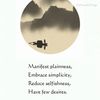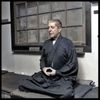Fćrsluflokkur: Bloggar
25.1.2011 | 08:47
Mindfulness meditation training changes brain structure in 8 weeks
Participating in an 8-week mindfulness meditation program appears to make measurable changes in brain regions associated with memory, sense of self, empathy and stress. In a study that will appear in the January 30 issue of Psychiatry Research: Neuroimaging, a team led by Massachusetts General Hospital (MGH) researchers report the results of their study, the first to document meditation-produced changes over time in the brain’s grey matter.
“Although the practice of meditation is associated with a sense of peacefulness and physical relaxation, practitioners have long claimed that meditation also provides cognitive and psychological benefits that persist throughout the day,” says Sara Lazar, PhD, of the MGH Psychiatric Neuroimaging Research Program, the study’s senior author. “This study demonstrates that changes in brain structure may underlie some of these reported improvements and that people are not just feeling better because they are spending time relaxing.”
Previous studies from Lazar’s group and others found structural differences between the brains of experienced mediation practitioners and individuals with no history of meditation, observing thickening of the cerebral cortex in areas associated with attention and emotional integration. But those investigations could not document that those differences were actually produced by meditation.
For the current study, MR images were take of the brain structure of 16 study participants two weeks before and after they took part in the 8-week Mindfulness-Based Stress Reduction (MBSR) Program at the University of Massachusetts Center for Mindfulness. In addition to weekly meetings that included practice of mindfulness meditation – which focuses on nonjudgmental awareness of sensations, feelings and state of mind – participants received audio recordings for guided meditation practice and were asked to keep track of how much time they practiced each day. A set of MR brain images were also taken of a control group of non-meditators over a similar time interval.
Meditation group participants reported spending an average of 27 minutes each day practicing mindfulness exercises, and their responses to a mindfulness questionnaire indicated significant improvements compared with pre-participation responses. The analysis of MR images, which focused on areas where meditation-associated differences were seen in earlier studies, found increased grey-matter density in the hippocampus, known to be important for learning and memory, and in structures associated with self-awareness, compassion and introspection. Participant-reported reductions in stress also were correlated with decreased grey-matter density in the amygdala, which is known to play an important role in anxiety and stress. Although no change was seen in a self-awareness-associated structure called the insula, which had been identified in earlier studies, the authors suggest that longer-term meditation practice might be needed to produce changes in that area. None of these changes were seen in the control group, indicating that they had not resulted merely from the passage of time.
“It is fascinating to see the brain’s plasticity and that, by practicing meditation, we can play an active role in changing the brain and can increase our well-being and quality of life.” says Britta Hölzel, PhD, first author of the paper and a research fellow at MGH and Giessen University in Germany. “Other studies in different patient populations have shown that meditation can make significant improvements in a variety of symptoms, and we are now investigating the underlying mechanisms in the brain that facilitate this change.”
Amishi Jha, PhD, a University of Miami neuroscientist who investigates mindfulness-training’s effects on individuals in high-stress situations, says, “These results shed light on the mechanisms of action of mindfulness-based training. They demonstrate that the first-person experience of stress can not only be reduced with an 8-week mindfulness training program but that this experiential change corresponds with structural changes in the amydala, a finding that opens doors to many possibilities for further research on MBSR’s potential to protect against stress-related disorders, such as post-traumatic stress disorder.” Jha was not one of the study investigators.
Bloggar | Slóđ | Facebook | Athugasemdir (0)
23.1.2011 | 11:15
Ég er aldrei hamingjusamur ...
Ţađ sem ţú flýrđ ţađ eltir ţig. Ţađ sem ţú eltir ţađ flýr ţig.
Sá einn öđlast sem kann ađ bíđa.
Spurđu ekki um hamingju: Ég er aldrei hamingjusamur, ţví ţarsem hamingja er ţar er ekkert ég.
Sigvaldi Hjálmarsson - Stefnumót viđ alheiminn. Leiđbeiningar um esóteríska iđkun.
Bloggar | Slóđ | Facebook | Athugasemdir (0)
22.1.2011 | 21:16
What Is Yoga, Really?
Hatha Yoga — a system of physical postures, or asanas, whose higher purpose is to purify the body, giving one awareness and control over its internal states and rendering it fit for meditation.
Karma Yoga — selfless service to others as part of one’s larger Self, without attachment to the results; and the performance of all actions with the consciousness of God as the Doer.
Mantra Yoga — centering the consciousness within through japa, or the repetition of certain universal root-word sounds representing a particular aspect of Spirit.
Bhakti Yoga — all-surrendering devotion through which one strives to see and love the divinity in every creature and in everything, thus maintaining an unceasing worship.
Jnana (Gyana) Yoga — the path of wisdom, which emphasizes the application of discriminative intelligence to achieve spiritual liberation.
Raja Yoga — the royal or highest path of Yoga, immortalized by Bhagavan Krishna in the Bhagavad Gita and formally systematized in the second century B.C. by the Indian sage Patanjali, which combines the essence of all the other paths.At the heart of the Raja Yoga system, balancing and unifying these various approaches, is the practice of definite, scientific methods of meditation that enable one to perceive, from the very beginning of one’s efforts, glimpses of the ultimate goal — conscious union with the inexhaustibly blissful Spirit.
The quickest and most effective approach to the goal of Yoga employs those methods of meditation that deal directly with energy and consciousness. It is this direct approach that characterizes Kriya Yoga, the particular form of Raja Yoga meditation taught by Paramahansa Yogananda.
Sjá: http://www.yogananda-srf.org/tmp/meditation.aspx?id=1721
Bloggar | Slóđ | Facebook | Athugasemdir (0)
20.1.2011 | 11:27
Dagskrá Lífspekifélagsins um helgina
Föstudaginn 21. janúar kl 20:30 heldur Halldór Jónsson lćknir erindi: Hugleiđsla og heilbrigđi
Laugardag 22. janúar er opiđ hús frá 15 - 17 og kl 15:30 heldur Vilhjálmur Hjaltalín Jónsson nemi viđ Háskólann í Aberdeen erindi : Hugleiđingar um hugleiđingu.
Á laugardögum kl. 14:00 verđur áfram hugleiđingarstund í hálftíma í sal félagsins niđri í umsjá Birgis Bjarnasonar. Kl. 14:30 mun hann svo kynna frćđsluefni úr safni Sigvalda Hjálmarssonar til kl. 15:00. Ţá mun taka viđ hefđbundin dagskrá uppi í bókasafni eins og áđur. Unnt er ađ sleppa hugleiđingunni kl. 14:00 ef fólk vill og mćta kl. 14:30.
Bloggar | Slóđ | Facebook | Athugasemdir (0)
18.1.2011 | 23:25
Entering Buddha Mind - Dharma talk
Let’s look at a quotation from Confucius’ grandson, in which he explains ‘the Tao’, which is literally the way, but which throughout the history of Taoism and Zen has acquired other names at different times in history. Eventually “the Tao” also came to imply “Big Mind,” “Original Mind,” “Ordinary Mind,” “God,” and “Buddha Nature.” But the basic experience underlying all these is the same.
“The Tao is the way things are, which you can’t depart from even for one instant. If you could departfrom it, it wouldn’t be the Tao. Therefore, the Master looks into her own heart and respects what is unseen and unheard. Nothing is more manifest than the hidden. Nothing is more obvious than the unseen. Therefore, the Master pays attention to what is happening within her innermost self.”
Dharma talk by Joseph O’Neill on May 15, 2010 at Sonoma Mountain Zen Center
Bloggar | Breytt s.d. kl. 23:27 | Slóđ | Facebook | Athugasemdir (0)
15.1.2011 | 11:12
Children need more meditation and less stimulation
If you want your children to feel more relaxed and less stressed, give them silence, not iPods.
This unthinkable idea came to mind after listening to Ernie Christie and Dr Cathy Day, two educationists from Queensland, Australia. They were addressing an audience at Regent's College, London, on the benefits of allowing children to experience regular periods of silent meditation in the classroom.
A pilot study in 2005, involving teaching meditation to five- to 17-year-olds, had shown that children are not only capable of meditation, they actually enjoy it. The benefits to children's wellbeing were so obvious to teachers that it persuaded Cathy Day, director of Townsville Catholic Education Office, to spend precious funds implementing the first Christian meditation programme for all schools in the diocese.
The initiative had two important catalysts: a diocesan bishop sympathetic to meditation, Michael Putney, and the input of Laurence Freeman OSB, leader of the World Community for Christian Meditation. Without their help, Day admitted, nothing would have got off the ground. When an almost pathological "busyness" is the norm, valuing stillness and silence is counter-cultural. When our culture trains us to be winners, to compete and to consume, we all sense society's imbalance, said Freeman. We need to give children an experience of another way of relating to themselves and to others.
Deputy director Christie agreed. If children are over-stimulated we rob them of something precious: being allowed to "just be" where children discover their own inner sense of who they are. Hijacked by a "doing" culture that measures everything by what we achieve or possess, meditation helps children access a deeper part of themselves – an inner sanctuary away from a world of incessant activity and noise. They learn to honour their own spiritual life.
We all have a spiritual life, irrespective of any faith we hold, said Christie. Meditation can be practised with a diversity of beliefs: children of other faiths take part in the programme. Meditating in a group can give children an early sense of belonging, says Christie. Children with learning or physical disabilities can join in and feel part of the class. But the practice is introduced gradually. The recommended meditation time is one minute per age level; for five- and six-year-olds, it would be five to six minutes.
A video of interviews with teachers, children and parents was admirably honest. Children of varying ages said meditation helped them to feel "relaxed" or more "peaceful". One boy said it helped his thoughts "just settle"; one girl enjoyed being "quiet". A child from an indigenous community said he was able "to be himself". Teachers reported improved behaviour in difficult children. Yet no one suggested it was a "cure all" practice. But at a recent awards ceremony in the second largest school in Townsville, the key speech was on the positive benefits of meditation.
The health benefits of meditation are well documented: it can relieve stress, lower blood pressure and alleviate depression. Psychiatrist Jonathan Champion said research showed most mental health problems have begun by the age of 14. Giving children periods of quietness and reflection to promote wellbeing could save money on healthcare later.
For Day and her team, meditation is an essential part of religious education. In the foreword to Christie's ground-breaking book, Coming Home: A Guide to Teaching Christian Meditation to Children, Putney says being "still" is very different from being "quiet". "Be still and know that I am God." It is in stillness that God speaks to the heart. Meditation as a way to self-knowledge and self-acceptance is an indispensable first step towards knowledge of God. Teachers hope children will discover a love that accepts them unconditionally and an inner spiritual resource they can draw upon later in life.
When religious schools are seen as intolerant of other faiths, the lost "contemplative" dimension of religion that reaches to a divine source beyond individual differences is surely needed. By training teachers in this depth dimension of faith, this remote diocese on the edge of the Australian outback is already creating waves.
Bloggar | Slóđ | Facebook | Athugasemdir (0)
11.1.2011 | 09:45
Dagskrá Lífspekifélagsins hefst aftur ţann 14. janúar
Föstudaginn 14. janúar kl. 20:30 Jóhann Sigurbergsson sýnir myndir frá starfi Guđspekifélagsins
Laugardaginn 15. janúar Sigríđur Einarsdóttir kynnir bókina "Hver ert ţú?" eftir Njörđ P Njarđvík og spilar tónlist.
Bloggar | Slóđ | Facebook | Athugasemdir (0)
10.1.2011 | 10:12
Allir eru velkomnir á zen-hugleiđslu-námskeiđ!
Námskeiđ eru haldin fyrsta mánudag í hverjum mánuđi kl.19:30. Námskeiđiđ kostar 3000,-kr +(2000kr fyrir trúfélaga) og er iđkun allan mánuđinn innifalin. Hćgt er ađ leggja inn á Zen á Íslandi – Nátthaga í heimabanka, kennitalan er 491199 2539 og reikningsnúmeriđ er 111 26 491199. Mikhael Óskarsson er leiđbeinandi. Áhugasömum er bent á ađ senda honum póst og skrá sig. (mikhaelaaron@gmail.com)Ţátttakendur lćra m.a.:
- Sitja zen-hugleiđslu. Zazen eđa sitjandi Zen
- Kinhin (gönguhugleiđslu)
- Formiđ í setusalnum og rétta líkamsstöđu viđ Zen hugleiđslu á púđa eđa stól
- Ađ fylgjast međ inn- og útöndun í ţögn
www.zen.is
Bloggar | Slóđ | Facebook | Athugasemdir (0)
7.1.2011 | 23:38
Eckhart Tolle TV í janúar 2011
Eckhart Tolle TV í janúar 2011
A Course in Miracles
A Course in Miracles was designed as a 365-day program for spiritual awakening. Eckhart, who has used this resource in his own teaching for years, invites us to see if we can get to the essence of the Course in one 90-minute session.
http://www.youtube.com/watch?v=a74gZF95j2E
http://www.youtube.com/watch?v=Lim6FXjWs0s
http://www.youtube.com/watch?v=oQX0blFGLUc
What is the appropriate response when someone says something rude or meant to hurt?
Right action stems from presence, and presence isn't necessarily a passive force. Eckhart explains.
http://www.youtube.com/watch?v=grOJDgaiAsI
The Practice of "People Watching
Eckhart describes an awareness practice we can all use to observe and relate to others through presence rather than judgment.
http://www.youtube.com/watch?v=QwX7GljTJDc
Does the ego strengthen itself with more consciousness?
Eckhart points out the enormous difference between seeing a pattern in yourself and being that pattern unconsciously
http://www.youtube.com/watch?v=FE-30zUBaas
Is awakening a gradual process or is there also the possibility of a sudden, spontaneous shift?
The process of awakening varies for each individual, and is influenced by our decision to embrace the new state of consciousness—or remain in an egoic "shell."
http://www.youtube.com/watch?v=pfarjgYI8Ag
How might a conscious person respond in comparison to an egoic response?
Eckhart retells a famous Zen story to illustrate the transformational power of non-reactivity.
http://www.youtube.com/watch?v=AjfpNhVjWLI
The Truth Will Make You Free
Eckhart shares a spontaneous teaching about the heart of Zen practice and the liberating discovery of who you really are beyond thoughts.
http://www.youtube.com/watch?v=AILLT2pEVrA
Qigong Meditation
Kim Eng leads us in a simple qigong practice for cultivating an awareness of our life force energy and allowing it to express itself spontaneously through our lives.
http://www.youtube.com/watch?v=nD4kJXTt6uE
Bloggar | Slóđ | Facebook | Athugasemdir (0)
6.1.2011 | 23:42
Where can we go to find God ...
Where can we go to find God if we cannot see Him in our own hearts and in every living being.
Bloggar | Slóđ | Facebook | Athugasemdir (0)
Um bloggiđ
OM - ॐ
Fćrsluflokkar
Tenglar
Hugleiđslunámskeiđ á Íslandi
- Námskeið hjá Hugleiðslu- og friðarmiðstöðinni
- Sahaja yoga-hugleiðsla
- Hugleiðslunámskeið hjá Brahma Kumaris
- Sri Chinmoy miðstöðin á Íslandi
- Andartak.is - Kundalini jóga og hugleiðsla
- Zen-hugleiðslunámskeið
- Dharma.is - Innsæishugleiðsla
- Innhverf íhugun
Frí hugleiđslunámskeiđ á Netinu
- Free Meditations
- Námskeið í búddískri hugleiðslu
- Námskeið í Kundalini yoga
- Free online meditation course
- Free Sahaja meditation course online
Hugleiđsla
Hér er ađ finna tengla ţar sem ţú getur lćrt og kynnt ţér hugleiđslu.
- Listin að hugleiða
- Zen á Íslandi - Zen-hugleiðsla
- Kristbjörg
- Kundalini-hugleiðsla
- Hugleiðslu- og friðarmiðstöðin
- SGI-búddismi á Íslandi
- Sri Chinmoy miðstöðin á Íslandi
- Skandinavíski yoga- og hugleiðsluskólinn
- Leiðbeiningar fyrir Zen-hugleiðslu
- Sahaja Yoga
- Brahma Kumaris - Raja Yoga hugleiðsla
- Jack Kornfield - Insight Meditation (vipassana)
- Centerpointe
- Ljósmiðlun
- Traditional Yoga and Meditation of the Himalayan Masters
- Innhverf íhugun
- Vipassana meditation course
Helg forn rit
- Veda-ritin
- Bhagavad Gita
- Bhagavad Gita
- Upanishads
- Upanishads
- Shiva sutra
- Brahma Sutra
- Yogasútrur Patanjalis
- Rig Veda
- Sama Veda
- Hatha Yoga Pradipika
- Shiva Samhita
- Gheranda Samhita
- Sacred Texts (Helg indversk rit)
- Biblían
- Dhammapada
- Kóraninn
Tímarit um andleg málefni
- Tímaritið Knowledge of reality
- Bindu - Tímarit Skandinavíska yoga- og hugleiðsluskólans
- Tímaritið Gangleri
- Primary Point - Zen
- Efnisskrá Ganglera frá 1926
- The Sufism Journal online
- The Theosophist
Bćkur á íslensku um andleg málefni
- Starfsrækt (Karma yoga) - Swami Vivekananda
- Allar bækur Gunnars Dal
- Bækur eftir Alice Baily
- Martínus - Bækur á íslensku
- Launviska Vedabóka
Bćkur um andleg málefni
- The Unknown Life of Jesus Christ
- Bók um Kriya Yoga
- Sjálfsævisaga Jóga
- Whispers from Eternity - Paramahansa Yogananda
- The Path - Swami Kriyananda
- God is for Everyone - Inspired by Yogananda
- My time with the master - Paramahansa Prajnanananda
- The Universe Within - Paramahansa Prajnanananda
- The art and science of Raja Yoga - Swami Kriyananda
- Complete work of Swami Vivekananda
- Gopi Krishna - Bækur, greinar og viðtöl
- Bókin Zen and the brain
- Zen Mind, Beginner´s Mind - Shunryu Suzuki-roshi
- Manual of Zen Buddhisim - D. T. Suzuki
- Stripping the Gurus
- Rödd þagnarinnar á ensku
- Eckhart Tolle - Stillness Speaks - Hljóðbók
- Bækur eftir Ramana Maharshi
- Saundarya Lahiri
- The Meditative Mind - Krishnamurti
- Krishnamurti´s Notebook
- Meditations - Krishnamurti
- The Serpent Power
- C. W. Leadbeater - Chakras: A Monograph
- Kundalini Yoga - Swami Sivananda
- Fríar bækur með Krishnamurti
- The Tibetan Book of Dead
- Karma Yoga - Swami Vivekananda
- Leiðarljós (Light on the Path) á ensku
- The Power of Now - Hljóðbók
- Hljóðbókin Breath sweeps mind eftir Jakusho Kwong-roshi
- Opening the Hand of Thought Bók eftir Kosho Uchiyama
- To shine one corner of the world : moments with Shunryu Suzuki : stories of a Zen master told by his students
- How to Cook your Life - Dogen
- The Art of Just Sitting: Essential Writings on the Zen Practice of Shikantaza
- On Zen Practice
- On Having No Head
Greinar um andleg málefni
- Greinasafn Lífspekifélagsins/Guðspekifélagsins
- Greinar eftir Sigvalda Hjálmarsson
- Greinar og rannskóknir tengdar kundalini
- Krishnamurti - Greinar, viðtöl og tilvitnanir
- Hugleiðingar um kenningar Sigvalda Hjálmarssonar - I. Hluti
- Hugleiðingar um kenningar Sigvalda Hjálmarssonar - II. hluti
- Greinar úr zen-tímaritinu Primary Point
- Greinar eftir dr. Erlend Haraldsson
- Greinasafn Jóns L. Arnalds
- Yður er í dag frelsari fæddur? - Njörður P. Njarðvík
- Yoga og geðrækt
- Leiðin til hugljómunar - Sigvaldi Hjálmarsson
- Geinar úr tímaritinu Quest
Ýmsir tenglar andlegs eđlis - Íslenskir
- Kærleikssetrið
- Jógakennarafélag Íslands
- Lífspekifélagið/Guðspekifélagið
- AA
- CoDa
- Viska og gleði
- Kærleikssamtökin
- Björg Einarsdóttir
- Trú.is
- LAUSNIN - Baráttusamtök gegn meðvirkni
- Dharma.is - Innsæishugleiðsla
- Dulheimar - Andleg þróunarheimspeki
- Vetrarbrautin.com
- Listi yfir skráð trú- og lífskoðunarfélög á Íslandi
Ýmsir tenglar andlegs eđlis - Erlendir
- DharmaTalk með Thich Nhat Hanh
- Agni Yoga
- Meditation of the Himalayan Masters
- Vedanta Society
- Vedanta.com
- tantra-kundalini.com
- Ayurveda-próf - Hvaða líkamsgerð ertu?
- Prajnanamission
- Big Mind
- Vedanta Spiritual Library
- Great Integral Awakening
- Sounds True
- Wildmind - Buddhist Meditation
- Institute for Consciousness Research
- Biology of Kundalini
- Kundalini Research Network
- Hindu Tantrik Tradition
- Inner Self
- Spirit Voyage
- Dalai Lama kyrjar möntru úr Rig Veda
- Ýmislegt um Ramakrishna
- The Five Tibetan Rite
- Message from masters
- Bæklingur um sanskrítarframburð
- The Theosophical Society - International Headquarters
- Sri Vidya
- Vedanet
- Eastern tradition - Eastern Tradition Research Archive
- Lífspekifélög/Guðspekifélög um allan heim
Ýmsir andans menn
- Sigvaldi Hjálmarsson
- J. Krishnamurti
- Ken Wilber
- Gopi Krishna
- Swami Sivananda
- Osho
- Deepak Chopra
- Swami Vivekananda
- Sri Ramakrishna
- Yogi Hari
- Eckhart Tolle
- Yogi Shanti Desai
- Yogi Amrit Desai
- Shunryu Suzuki roshi
- Ramana Maharishi
- Sri Aurobindo
- Paramahansa Yogananda
- Paramahamsa Hariharananda
- Jakusho Kwong-roshi
- Jack Kornfield
- Swami Rama
- Grétar Fells
- D. T. Suzuki
- Dalai Lama
- Thich Nhat Hanh
- Eckhart Tolle
- Helena Blavatsky
- Paramahamsa Prajnanananda
- Rupert Spira
- Bodhidharma
- Om Swami
Lífspeki/Guđspeki
- Lífspekifélag Íslands
- Lífspekifélagið í USA
- Helena Blavatzky
- Facebook-síða Lífspekifélags Íslands
- Aðalstöðvar Lífspekifélagsins á Indlandi
Kriya Yoga
Hér er ađ finna tengla tengda Kriya Yoga
- Kriya Yoga Institute
- Paramahansa Hariharananda
- Paramahamsa Prajnanananda
- Bækur um Kriya Yoga eftir Hariharananda og Prajnananda
- Self-Realization Fellowship
- Ananda: The Teaching of Paramahansa Yogananda
- Cyberspace Ashram for Kriya Yoga
- Bókin Sjálfsævisaga jóga (Autobiography of a Yogi)
- Kriya Yoga - Swami Shankarananda Giri
- Kriya Yoga - Yogi Dhirananda
- Bók um Kriya Yoga á Netinu
- Kriya Yoga in the Lahiri Mahasaya family tradition
- Babaji´s Kriya Yoga
- Myndbönd um kriya yoga
- Prajnanamission
- Babaji Kriya Hatha Yoga - 18 Kriya Postures
- Umsókn - Kennslustundir hjá SRF
Hatha Yoga (Líkamsstöđur - Teygjur)
- Yogavin
- Jóga hjá Kristbjörgu
- Jóga Stúdíó
- Jógakennarafélag Íslands
- Jóga Jörð
- Jen Reviews
- Sólir
- Yogashala
- Jógakennarar og jógastöðvar á Íslandi
Zen
- Zen á Íslandi
- Sonoma Mountain Zen Center
- Bókin Zen Mind, Beginners Mind eftir Shunryu Suzuki-roshi
- Bókin No Beginning. No End eftir Jakusho Kwong-roshi kennara Zen á Íslandi
- Hljóðbókin Breath Sweeps Mind eftir Jakusho Kwong-roshi
- The Teaching of Shunryu Suzuki-roshi
- San Francisco Zen Center
- Myndbönd með Suzuki-roshi
- Plum Village - Thich Nhat Hanh
- Zen of Recovery - Mel Ash
- Zen Road
- Zen sútrur
- Kwan Um School of Zen
- Daily Zen
- Big Mind
- Zen Peacemakers
- Suzuki-roshi 50
- Hljóðbókin Zen mind, beginner´s mind
- The Suzuki Roshi Audio Archive
- Opening the Hand of Thought Bók eftir Kosho Uchiyama
- To shine one corner of the world : moments with Shunryu Suzuki : stories of a Zen master told by his students
- How to Cook your Life - Dogen
- The Art of Just Sitting: Essential Writings on the Zen Practice of Shikantaza
- On Zen Practice
Bloggvinir
-
 thesecret
thesecret
-
 gudjonbergmann
gudjonbergmann
-
 gyda
gyda
-
 heringi
heringi
-
 gudmundurhelgi
gudmundurhelgi
-
 braxi
braxi
-
 fruheimsmeistari
fruheimsmeistari
-
 vilborg-e
vilborg-e
-
 steina
steina
-
 ludvik
ludvik
-
 maggadora
maggadora
-
 baenamaer
baenamaer
-
 perlaheim
perlaheim
-
 vestfirdir
vestfirdir
-
 vglilja
vglilja
-
 palmig
palmig
-
 einherji
einherji
-
 andreaolafs
andreaolafs
-
 flinston
flinston
-
 birnarebekka
birnarebekka
-
 tilfinningar
tilfinningar
-
 dizadj
dizadj
-
 gylforce
gylforce
-
 esa-emorea777
esa-emorea777
-
 estersv
estersv
-
 eydis
eydis
-
 gudjonelias
gudjonelias
-
 heildraent-joga
heildraent-joga
-
 heildraent-lif
heildraent-lif
-
 guru
guru
-
 tru
tru
-
 fun
fun
-
 jensgud
jensgud
-
 josira
josira
-
 katrinsnaeholm
katrinsnaeholm
-
 kari-hardarson
kari-hardarson
-
 kiza
kiza
-
 kjarvald
kjarvald
-
 kristinnhalldor
kristinnhalldor
-
 kiddirokk
kiddirokk
-
 krilli
krilli
-
 laufherm
laufherm
-
 mariaannakristjansdottir
mariaannakristjansdottir
-
 manisvans
manisvans
-
 nanna
nanna
-
 aronsky
aronsky
-
 huldumenn
huldumenn
-
 ragjo
ragjo
-
 rose
rose
-
 straitjacket
straitjacket
-
 vinur
vinur
-
 nimbus
nimbus
-
 slembra
slembra
-
 svanurg
svanurg
-
 toshiki
toshiki
-
 hanoi
hanoi
-
 thorhallurheimisson
thorhallurheimisson
Heimsóknir
Flettingar
- Í dag (29.8.): 0
- Sl. sólarhring: 1
- Sl. viku: 28
- Frá upphafi: 0
Annađ
- Innlit í dag: 0
- Innlit sl. viku: 18
- Gestir í dag: 0
- IP-tölur í dag: 0
Uppfćrt á 3 mín. fresti.
Skýringar






